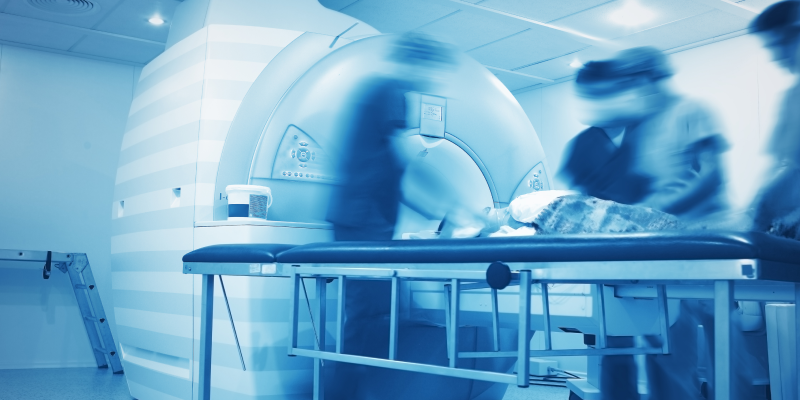

Teleradiology
Behind The Scenes of Teleradiology: How Digital Imaging Is Changing Diagnostic Medicine
Digital Imaging Radiology
Current gaps in radiology services in India
The field of radiology plays a pivotal role in modern medical diagnosis and treatment. Radiodiagnosis is one of the most in-demand medical specialities at present as chronic diseases and the ageing population is on the rise globally, including in India. However, its setup is both resource intensive and expensive.
The current gaps in radiology services in India can be attributed to various factors spanning from technology and infrastructure limitations to workforce shortage and unequal distribution of resources. For example, a recent report published in a national daily suggests a huge shortage of skilled radiologists in India, which is not only a challenge in providing radiology services to all but also hampers the timely diagnosis of emergency patients. Currently, in India 1.5 million scans are done every day but there are less than 15,000 radiologists in the entire country to study and report them. This severely imbalanced ratio not only overburdens the radiologists but also impacts the quality of patient care.
Another key issue is the disparity in the current urban-rural healthcare system in India. More than 75% of the healthcare infrastructure is concentrated in the metro cities where only a quarter of the total population resides. This leaves the majority of the Indians living in rural areas without access to even basic medical facilities unless they come to metro cities for treatment. This in turn increases the cost of treatment and impacts the livelihood of those living in rural areas. It is estimated that Indians pay about 63% of their medical expenses out of their pockets and about 7% of Indians are pushed into poverty every year due to healthcare expenses.
Bridging The Gap with Digitalization
To bridge these gaps, India needs strategic investments in both technology and human resources. This includes expanding the reach of advanced imaging technology to underserved areas, fostering teleradiology initiatives, and implementing policies to incentivize radiologists to work in rural settings.
At its core, teleradiology involves the remote interpretation of medical images through digital means. Radiological images after acquisition are transmitted from one location to another for expert analysis and diagnosis. This process leverages the capabilities of digital technology to send images and relevant patient data, enabling radiologists to provide their insights and expertise without the need for physical presence.
Digital imaging and teleradiology services in India
Evidence suggests that the first teleradiology service in India was started by a Mumbai-based company in 1996 and since then the industry has come a long way with many global players such as Wipro, Siemens, GE, etc currently operating in India. Although the exact number of teleradiology service companies is difficult to comprehend, it is estimated that more than 1.2 lakhs of such small and large-scale organizations exist in India currently.
- In 2010, teleradiology service was first successfully used to cater to the needs of the tribal population in Itanagar, Arunachal Pradesh, who did not have access to an on-site radiologist. The on-site radio technicians were given online training. The patient images after procurement were uploaded and transferred digitally with the help of a radiology information system (RIS) to a remote team of radiologists. The reported turnaround time for emergency and non-emergency cases was reported to be 30 mins and 6 hours respectively.
- Similarly, Tripura, another northeastern state of India faces multiple healthcare challenges given its remote geographical location, high tribal population and lack of essential healthcare infrastructure. With the help of teleradiology service, the Government of Tripura was able to deliver high-quality radiology services to 26 healthcare centres at district and sub-district level hospitals. Digital X-rays of patients were transmitted to a remote panel of radiologists in Bangalore using cloud technology to interpret and offer appropriate treatment to the past majority of its tribal population. The RIS and the picture archiving and communication system (PACS) was used to report, archive and billing procedure. The average turnaround time was 3 hours for emergency and 8 hours for routine examinations.
- The adaptation of mobile health vans equipped with digital X-rays, ultrasound, etc has been another important method of bridging access gaps in rural India, especially in tackling the tuberculosis burden. It has led to increased detection, a decrease in the time of diagnosis and increased diagnostic accuracy in the management of both pulmonary and sputum-negative tuberculosis.
- One of the most important contributions of technology in radiology is the integration of artificial intelligence aiding clinical decision-making. Such solutions support radiologists in making important clinical decisions, taking into account all patient aspects and medical concerns. For example, an AI tool called qTrack can detect 29 types of abnormalities in chest X-rays and is being used for tuberculosis screening in remote areas of Karnataka. The process involved uploading the X-ray image in the qTrack app using a smartphone, which then instantly analyses the X-ray. This helped in reducing diagnosis time and improved the quality of interpretation by minimizing interobserver variability.
Adopting Digital Imaging and teleradiology for a brighter future
In the ever-evolving landscape of healthcare, technological innovations have been reshaping the way we approach diagnosis and treatment.
- Digital imaging can greatly improve the accuracy, quality and speed of imaging. For example, newer 3D CT scanners are faster and yield high-resolution, multi-dimensional images for accurate interpretation, thereby reducing radiation exposure risk and the need for repeat scanning.
- The integration of virtual reality (VR) and augmented reality (AR) can provide radiologists with immersive visualizations, leading to even more accurate assessments.
- Digital imaging allows images to be stored, shared and manipulated digitally between healthcare providers simultaneously, fostering collaboration and quicker decision-making. It also reduces the need for physical film.
- One of the most remarkable aspects of teleradiology is its ability to transcend geographical constraints. This is particularly significant in remote or rural areas where access to specialized care might have been a distant dream. In emergency cases, where time is of the essence, this accelerated approach can significantly impact patient outcomes.
- Teleradiology optimizes the distribution of resources. A single radiologist can offer their services to multiple facilities, making the best use of the available workforce.
Digital imaging and teleradiology are becoming increasingly popular in India. The Indian government is using teleradiology to improve the quality of care for patients in rural areas. Private radiology groups are using teleradiology to expand their reach and provide services to patients in more locations. This is helping to make radiology services more affordable and accessible.
FAQs
PACS (Picture archiving and communicating system) is a computer application that is used to store and access radiological images. When compared to conventional films, PACS allows the image to be accessed by multiple health professionals simultaneously from anywhere. This allows faster diagnosis and better collaboration among the treating team. Other advantages of the PACS system include decreased consumption of radiographic film, direct cost saving and superior image quality. Moreover, these images can also be easily accessed for future reference.
Yes, teleradiology prioritizes data security and patient privacy. Secure encryption methods are employed to protect sensitive medical information during transmission. Teleradiology service providers adhere to strict regulatory guidelines, including data protection laws, to ensure patient records remain confidential and secure.
Teleradiology fosters collaboration by enabling radiologists to consult their peers for second opinions or guidance on complex cases. Through digital platforms, radiologists can share images and insights with colleagues, enhancing diagnostic accuracy and promoting continuous learning within the radiology community. This collaborative approach ultimately benefits patient care.
RIS (Radiology Information System) is a software system that is specially designed to streamline patient management in the radiology department, such as tracking imaging orders and billing. It can also help in scheduling patient appointments, reducing patient wait time, tracking patients' history from the past and integrating with current reports.
Teleradiology is well-suited for integrating emerging technologies AI. AI algorithms can analyse medical images to assist radiologists in identifying patterns and abnormalities. Teleradiology serves as a platform to incorporate AI-driven insights, leading to more accurate diagnoses. The combination of human expertise and AI-driven assistance can significantly improve patient outcomes.
More from AMI
Emerging Trends and Technologies in Medical Imaging
19/06/2023
What is Diagnostic Radiology? Understanding its Tests and Procedures
14/08/2023
Imaging In Pregnancy
18/01/2023
Empowering Radiologists-Teleradiology Redefines the Role of Imaging Specialist
09/10/2023
Intra- Operative 3D Imaging With O- Arm Making Complex Spine Surgeries Safe and Accurate
30/11/2022
Imaging Instrumentation Trends In Clinical Oncology
26/06/2023
Sports-Related Injuries and the Importance of Radiology
30/01/2023
Scope of Radiologist in India
29/08/2023
Revolutionizing Indian Healthcare: Unlocking the Potential of Teleradiology in Remote Areas
27/09/2023
How to Choose a Prospective Teleradiology Service Provider
07/08/2023
Emerging Techniques in Radiology By Dr. Namita
10/11/2022
How to Increase the Efficiency of the Radiology Equipment
21/08/2023
Improvement of Patient Care Through Teleradiology
03/07/2023
10 Strategies To Prevent Burnout In Radiology
09/01/2023
Advances In Neuroradiology
06/01/2023
Teleradiology's Contribution to Timely Emergency Diagnoses
04/10/2023
Radiology Practices
30/11/2022

AMI Expertise - When You Need It, Where You Need It.
Partner With Us
